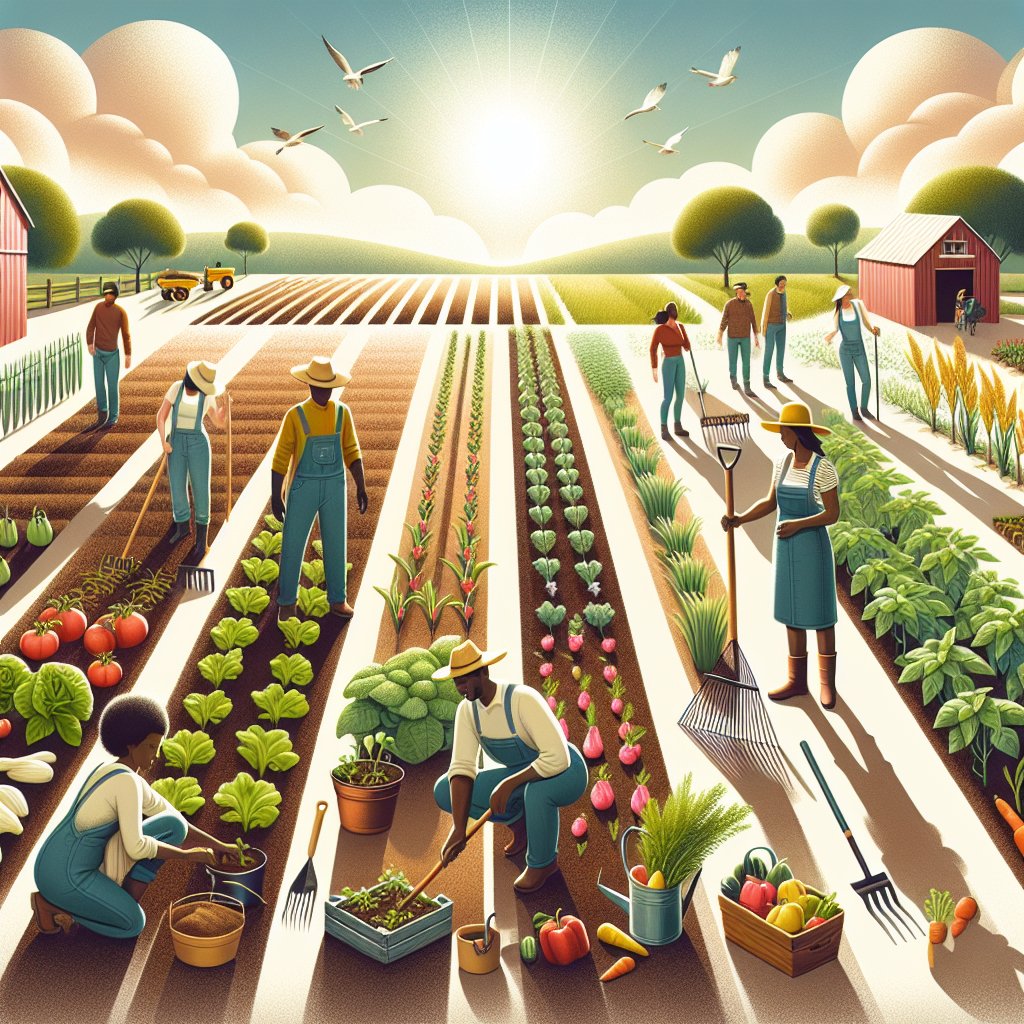
Managing crop diseases without the use of chemicals is a growing concern for farmers and agriculturalists worldwide. As the demand for organic produce increases and the environmental impact of chemical pesticides becomes more apparent, alternative methods for disease management are gaining attention. This article explores various strategies and practices that can help manage crop diseases effectively while minimizing or eliminating the use of chemical interventions.
Understanding Crop Diseases
Crop diseases are caused by a variety of pathogens, including fungi, bacteria, viruses, and nematodes. These pathogens can significantly reduce crop yields and quality, leading to economic losses for farmers. Understanding the nature of these diseases and their life cycles is crucial for developing effective management strategies.
Types of Crop Diseases
There are several types of crop diseases, each with its own set of challenges. Fungal diseases, such as powdery mildew and rust, are among the most common and can spread rapidly under favorable conditions. Bacterial diseases, like bacterial wilt and blight, often require specific environmental conditions to thrive. Viral diseases, such as mosaic viruses, can be particularly challenging to manage due to their ability to spread through insect vectors. Nematode infestations, while less visible, can cause significant root damage and reduce plant vigor.
Factors Contributing to Disease Outbreaks
Several factors contribute to the outbreak and spread of crop diseases. Environmental conditions, such as temperature, humidity, and rainfall, play a significant role in disease development. Poor soil health and inadequate crop management practices can also exacerbate disease problems. Additionally, the use of susceptible crop varieties and lack of crop rotation can increase the risk of disease outbreaks.
Non-Chemical Disease Management Strategies
To manage crop diseases without chemicals, farmers can adopt a range of cultural, biological, and mechanical practices. These strategies not only help control diseases but also promote overall plant health and resilience.
Cultural Practices
Cultural practices involve modifying the growing environment to reduce disease pressure. Crop rotation is a fundamental practice that helps break the life cycle of pathogens by alternating crops with different disease susceptibilities. Selecting disease-resistant varieties is another effective strategy, as these plants are bred to withstand specific pathogens.
Maintaining proper plant spacing and pruning can improve air circulation and reduce humidity levels, making conditions less favorable for disease development. Additionally, practicing good sanitation by removing infected plant debris and weeds can help prevent the spread of pathogens.
Biological Control
Biological control involves using natural enemies of pathogens to suppress disease outbreaks. Beneficial microorganisms, such as Trichoderma and Bacillus species, can be introduced to the soil or plant surfaces to outcompete or inhibit pathogenic organisms. These biocontrol agents can be applied as seed treatments, soil amendments, or foliar sprays.
Encouraging biodiversity in the farm ecosystem can also enhance biological control. Planting cover crops, maintaining hedgerows, and providing habitats for beneficial insects can support a diverse community of natural enemies that help keep pathogen populations in check.
Mechanical and Physical Methods
Mechanical and physical methods involve using tools and techniques to physically remove or prevent the spread of pathogens. Hand-picking infected leaves or fruits, using barriers such as row covers, and employing soil solarization are examples of mechanical methods that can be effective in managing crop diseases.
Soil solarization involves covering the soil with clear plastic to trap solar energy, raising soil temperatures to levels that kill soil-borne pathogens. This method is particularly useful for controlling nematodes and certain fungal diseases.
Integrated Disease Management
Integrated Disease Management (IDM) is a holistic approach that combines multiple strategies to manage crop diseases sustainably. By integrating cultural, biological, and mechanical methods, farmers can create a resilient farming system that minimizes the reliance on chemical inputs.
Monitoring and Early Detection
Regular monitoring and early detection of diseases are critical components of IDM. By scouting fields frequently and using diagnostic tools, farmers can identify disease problems early and implement appropriate management strategies before the disease spreads. This proactive approach helps reduce the need for reactive chemical treatments.
Decision Support Systems
Decision support systems (DSS) are tools that help farmers make informed decisions about disease management. These systems use data on weather conditions, crop growth stages, and disease models to predict disease risk and recommend management actions. By using DSS, farmers can optimize their disease management practices and reduce unnecessary interventions.
Conclusion
Managing crop diseases without chemicals is a viable and sustainable approach that benefits both the environment and agricultural productivity. By understanding the nature of crop diseases and implementing a combination of cultural, biological, and mechanical strategies, farmers can effectively control diseases while reducing their reliance on chemical inputs. Integrated Disease Management offers a comprehensive framework for achieving these goals, promoting healthier crops and more resilient farming systems.

